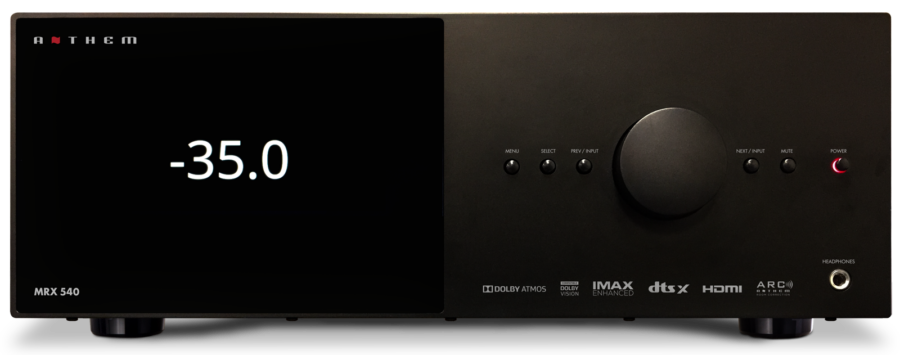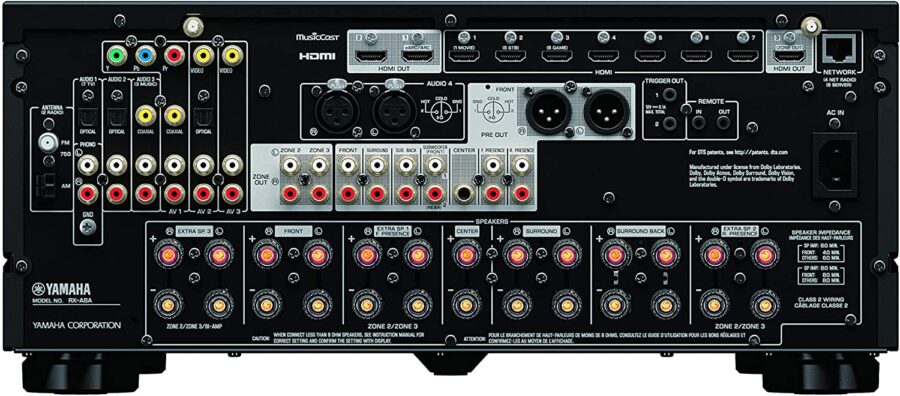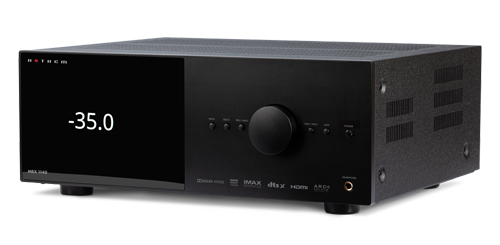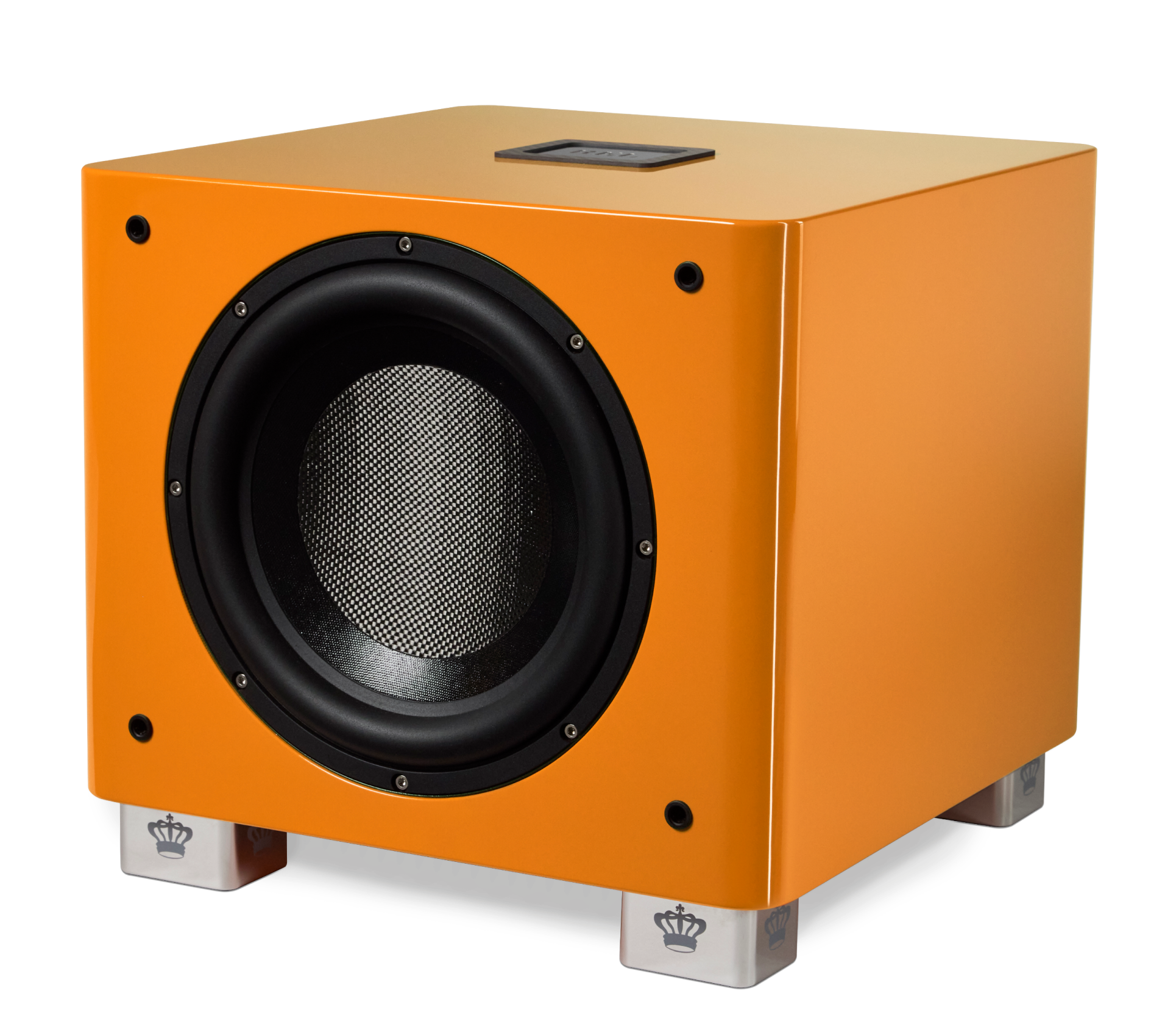Blog
$1 Billion Dollars, now on Sale for $599
Why Modern AV Receivers are the Best Deal on Planet Earth

If you’re even remotely thinking about buying a soundbar, STOP! Don’t do so until you’ve read this short article.
By the way, it’s now probably closer to $3 billion, but who’s counting? I believe it was Senator Everett Dirksen, back in 1969, who, referring to budget disagreements said: “A billion here, a billion there and pretty soon you’re talking about real money.” And so it is in the world of audio video, as well. While we work so hard to bring true high-end performance to both those who are lucky enough to be wealthy and the rest of us ”not-so-rich” folks every day, it’s the audio-video receiver that wins, hands down, tying everything together with a bow when it comes to increasingly complex technologies and really “doing it” for a song.
Twenty-one years ago, there were no transfer studios in Hollywood capable of reproducing 4K digital ultra hi-rez video, or 11 (or more) channels of audio. Dolby Atmos had yet to be invented, and HDMI was yet to be released. And this was in studios working with the best talent in the movie business with budgets of millions. Yet today, you can buy a Yamaha RX A8A at $3549.00 that does all that, plus Bluetooth, with more zones of audio spread throughout a large Texas home than any cowboy should have and (I quote from Yamaha’s website)… “Pandora, Spotify, Napster, SiriusXM, TIDAL, Deezer, Qobuz, Amazon Music HD.” Napster? Seriously? Hell, for $599 (as I write this, on sale at Crutchfield for $429) you can get a nifty little Yamaha RX- V4A 5.1 receiver that does enough to justify the headline above.

It’s the AV receiver that allows the A and the V in Audio-Video to cohabitate. And, you can thank the Japanese engineers, and those who approve their budgets, for the existence of these miracles of consumerism. It takes huge budgets to drive research that’s measured in decades. HDMI? A miracle of modern engineering let down by one of the most annoying connectors ever designed. Yet, what it delivers night after night is miraculous -4K, multiple sources, multiple sources from the same source. And that came after DVI (remember that? If so, you’re getting old) and before that Component.
Traditionally, a receiver is what allows blu ray, cd, streaming video (such as Roku or Apple tv), and audio streamers to come in, be processed and sent out to multiple channels, delivered to multiple locations in the home, and work for years on end.
Receivers resolve arguments and frustration. Sound bars may be fine for some, but I’ve never had anyone who owned a soundbar hear my relatively modest audio-video system and not come away saying something like “Honey, we need to seriously do something in our living room.” The arguments start when no one bothers to ask junior if his Sony PS-5 was important to allow him to play games, or when you have more than one source. If you want to watch television delivered by a set-top box (DirecTV, or Sky TV in the UK, etc.) they’re adequate. Want to watch TV, BluRay, occasionally play a game, play Spotify—or one of the good sounding hi-rez services like QoBuz – you need a receiver.
Think of the AVR as the nerve center: taking in signals from multiple sources, processing these, and then sending them out to multiple amplifier channels (that’s what drives your speakers and you DO want better speakers than all but the best soundbars can deliver) and even sends a signal to your subwoofer(s). So, say “thanks” to the engineers who brought you the AV receiver. As confusing as their complex back panels can seem, they allow almost limitless possibilities and, if you learn to study them and break them into basic sections, you’ll quickly see that, while there are dozens of connections, they quickly organize themselves into logical groups.
A few tips:
Yamaha has delivered the most reliable HDMI circuits for the past decade. Why? Because they’re a performance-based specialty company. They take great pride in everything they do, and they’re not owned by a private equity group, fully capable of deciding for you that saving 21 cents on a cheaper HDMI chip is a worthwhile use of your money. That just happened to two of the best receiver companies this year. If your HDMI doesn’t work none of the rest of it matters.

NAD and Anthem are the sole keepers of the flame. As long as Ray Dolby (yes, that Dolby, the one that has their name on the theatre that the Oscars take place in, the ones that hold hundreds of patents and authored modern entertainment as we know it) was alive, he insisted on Full Range (flat output to 20 Hz) sound being available in every receiver their firm certified. Today, only NAD and Anthem offer Full Range sound, so necessary for producing the wrap-around sound that home theatre is supposed to deliver. Everyone else is out of the game at 40 Hz. Missing a full octave of the deepest bass simply isn’t good enough, either. To be truly transported into a film requires ALL of the speakers to be able to deliver deep bass since it is deep bass (below 40Hz) that carries the aural cues of size, scale, and directionality. This deep bass taps into the lizard brain, the thing that allowed our ancestors’ genes to carry on because their brains could sense the direction and distance of a predator, thus allowing humans to survive. In Home Theatre, it’s harder to find, but a couple of great companies still get it. When will Dolby return to their roots and once again require that all receivers offer the option of Full Range sound?
Better is Better: Don’t chase a number of channels. Added complexity, for its own sake does, not a better receiver make. Buy the fewest channels, the best sound, and the fewest features you need to make your system work.
Buy AVRs for their processing abilities and fundamental sonic signature. Yamaha sounds sweet, Marantz muffled, Denon is probably the best, most accurate balance, NAD has very dynamic and open with deep bass, and while Anthem is building real quality, I haven’t wrapped my hands around one long enough to give you a sonic sketch. Onkyo used to be great but due to their recent woes, we can’t recommend them. Once you have the most basic receiver that meets your needs and sounds right, consider upgrading later to separate high-quality power amps. As good as receivers are, none of them have the kind of dynamics and openness that good separate power amps deliver.
Lastly – Don’t Skimp on Cables: They matter. And, while it’s beyond the scope of this article, find a good store and work with them, listening to a few different brands and types of cables (it helps if you know if you like a starkly clear sound or prefer a warmer, more romantic presentation).
Enjoy!











